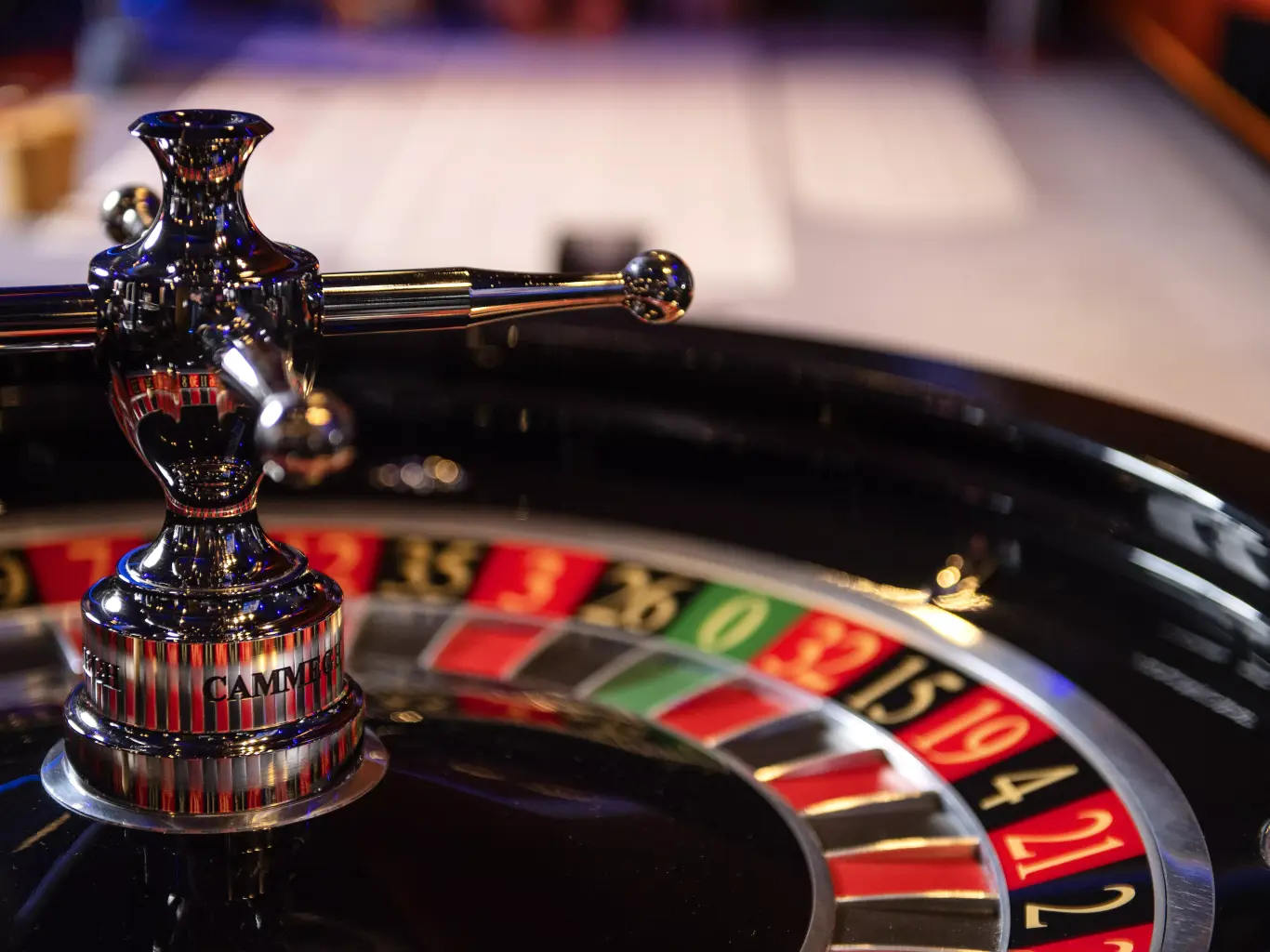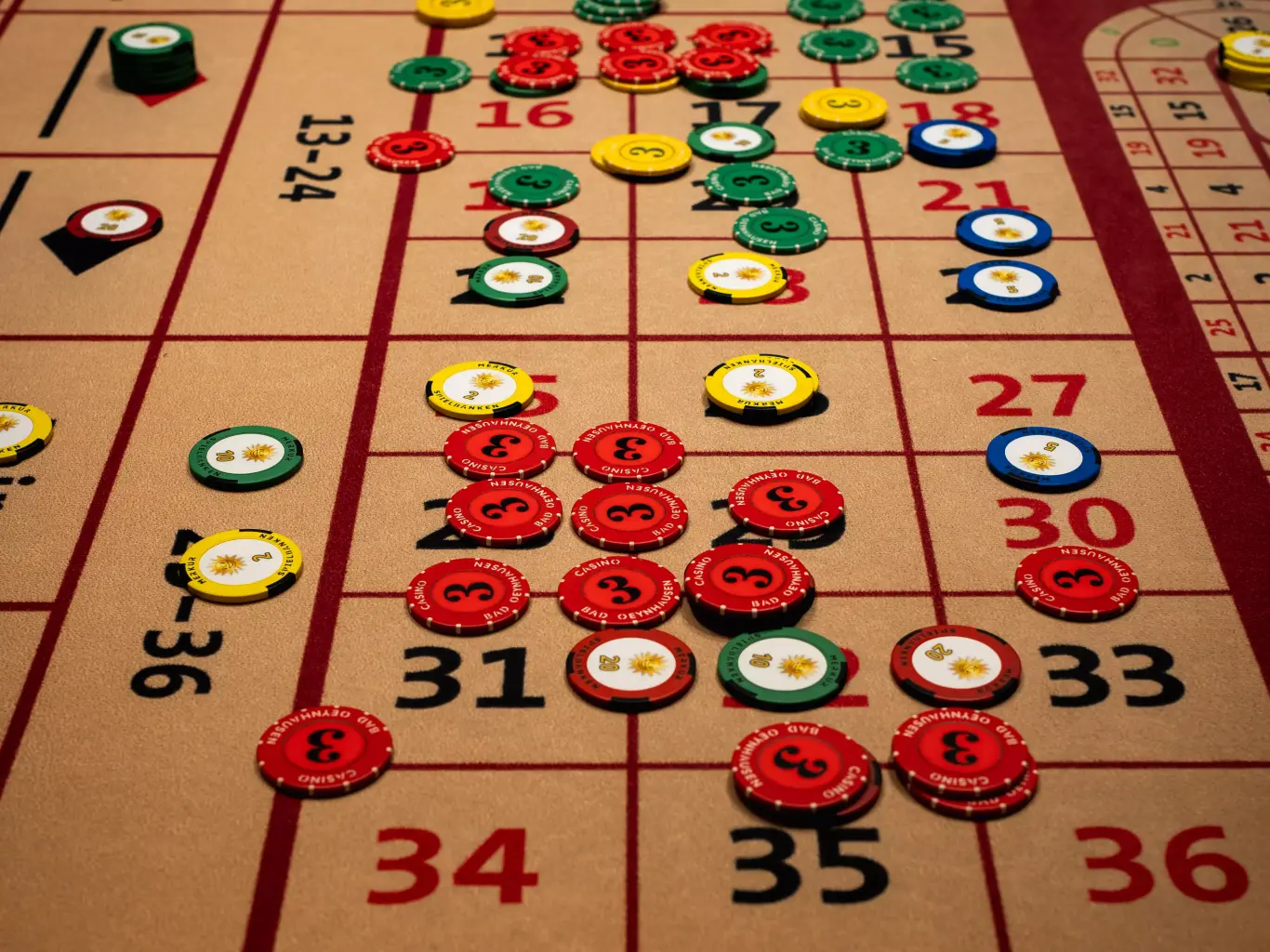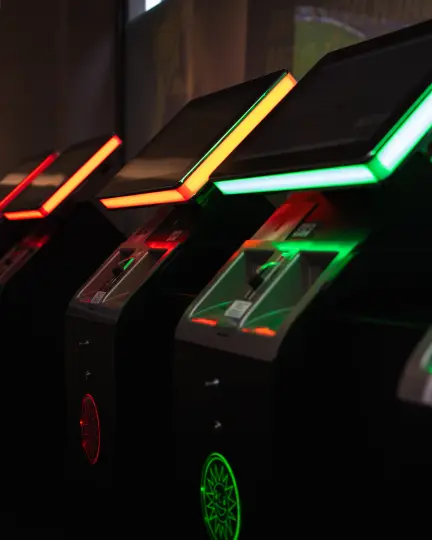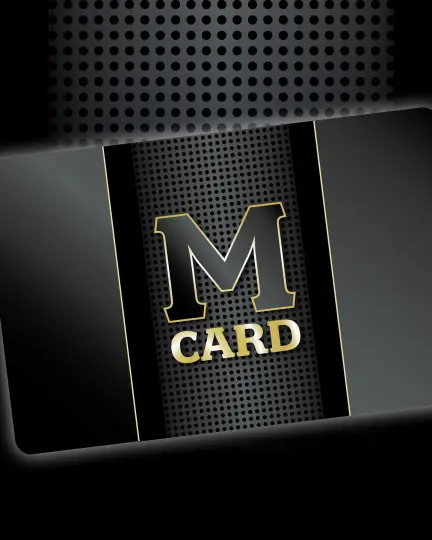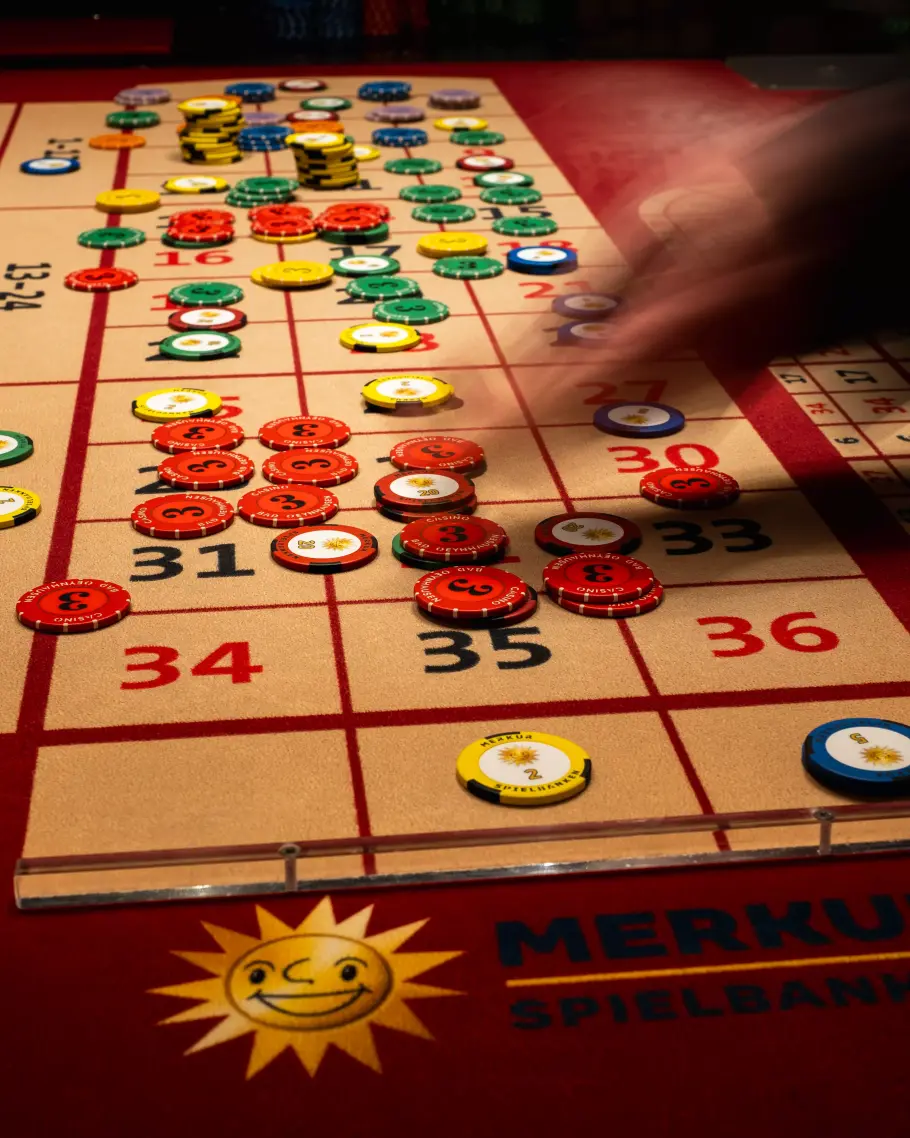
How does Roulette work?
Chips, table layout, wheel: what do these terms mean in roulette? Learn all about the terminology and the roulette rules at MERKUR.
A Gaming Classic
Roulette has been played in Europe since the 17th century and is now an integral part of Casinos and gaming halls.
To make sure you understand this classic and can join in on your next visit to the MERKUR Casinos, we explain the gameplay and the most important terms here.
In brief: What is Roulette?
In roulette, a number is drawn from the sequence 0 to 36 with the help of a ball and the roulette wheel. The probability that the ball lands on one of the 37 numbers is the same for each number.
Before play begins, you place your bet on which number the ball will land. You do this by placing your chips on the table layout (the tableau) on single numbers or combinations from 0 to 36. If the ball lands on one of your chosen numbers, you win a multiple of your stake.
At the same time, you can also bet not only on numbers but on the two colours of the roulette wheel’s fields – black or red.
Structure of the Roulette Table
A roulette table consists of a roulette wheel (sometimes also called the cylinder) and the table layout.
Let’s first take a closer look at the wheel:
The Course of Play:
After all players have placed their bets, the dealer starts the game with the call “Place your bets, please.” Once he releases the ball into the wheel, he signals with “No more bets” that no further chips may be placed.
The ball must make at least eight revolutions in the wheel before coming to rest on one of the 37 numbers. The dealer then announces the winning number and carries out the corresponding payouts.
The Most Important Terms in American Roulette
Racetrack
Here you can play series, the zéro game and neighbour bets. Neighbours are the numbers to the right and left of the chosen number on the racetrack. A number can be played with up to four neighbours. To do this, you announce to the croupier, for example: “7 one-one” (3 chips), “14 two-two” (5 chips), “10 three-three” (7 chips) or “17 four-four” (9 chips). The croupier repeats the announcement and places the chips on the chosen number on the racetrack.
If the ball lands on one of these numbers, the player receives a payout of 35 to 1. Bets on the racetrack are always placed by the croupier.
Dolly
The dolly is a small marker used to indicate the winning number, visible to all players. As long as it remains on a number, no new bets may be placed on that field.
Wheel Cheeks
These chips do not have a value printed on them but are distinguished only by their colour. Each guest first chooses their colour and determines the value of their chips. Wheel checks can only be used at one table. The limited range of colours defines the maximum number of players. After the game ends, wheel checks are exchanged back into value chips, known as values.
Permanences
In roulette, permanences refer to the written or electronically recorded sequence of numbers that have come up.
Tronc
In the case of the absolute top win (straight-up bet), it is customary according to international practice to leave the staff a portion of the winnings (equal to the stake) as a tip (tronc).
